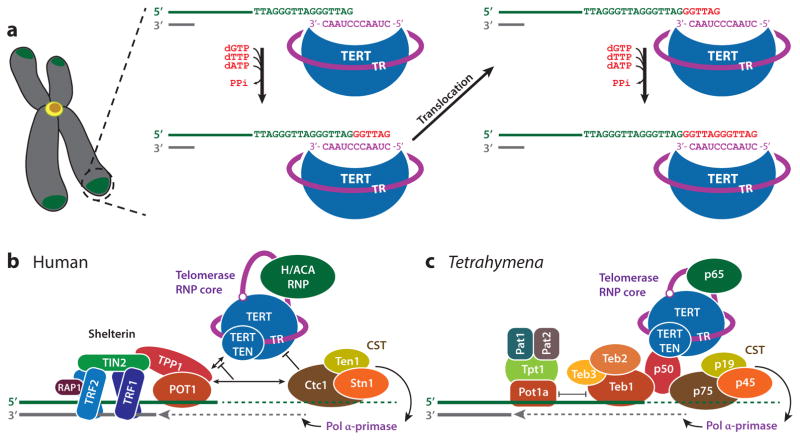Figure 1.
Schematics of telomere extension by telomerase and of human and Tetrahymena telomerase and telomerase-associated proteins at the telomeres. (a) Telomerase uses its integral RNA template for the reverse transcription of telomeric repeats onto the 3′ ends of chromosomes. The 3′ end of the DNA aligns with the 3′ end of the template in register to allow synthesis of the telomere repeat. After synthesis of a repeat (GGTTAG in humans), the telomerase template must shift register (translocate) by one repeat before nucleotide addition can reinitiate. (b) The human telomerase RNP core (TERT, TR, H/ACA scaRNP proteins) is recruited to telomeres by the shelterin complex. CST interaction with TPP1–POT1 inhibits telomerase activity. (c) Tetrahymena telomerase RNP core (TERT, TR, p65) is constitutively assembled with the p50, TEB, and CST accessory proteins. Abbreviations: RNP, ribonucleoprotein; scaRNP, small Cajal body ribonucleoprotein; TERT, telomerase reverse transcriptase; TR, telomerase RNA.

